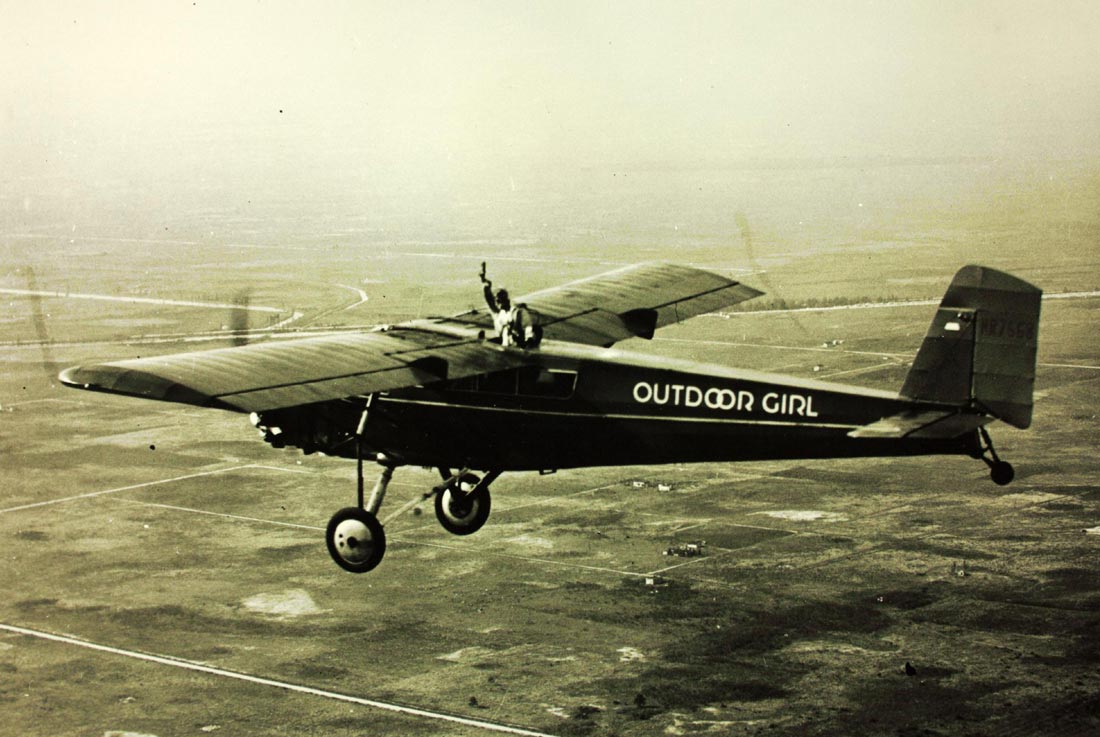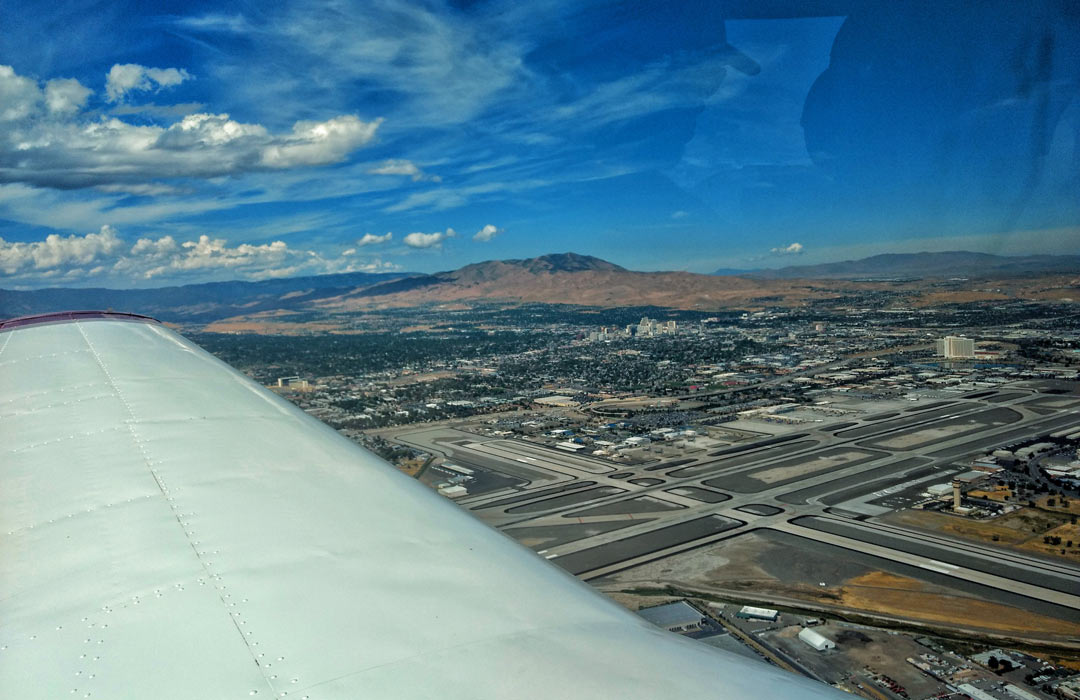Don’t Sweat the Small Stuff
It was 30 degrees below zero outside and I was sweating like a meatloaf. The wings of my airplane were covered in ice. I’d been in some uncomfortable situations both in and out of an airplane before, but this was pretty grim. Earlier this morning, while performing a pre-flight inspection on my Beech Airliner, my Chief pilot had approached with his iPhone in a well-gloved hand. He’s a short fellow; confident, but not cocky with a commanding presence. While the rest of us on the ramp were wearing 3 layers of thermals, topped with North Face parkas, Sorrels, stocking caps, and scarves, he wore an Avenged Sevenfold hoodie covered by the UPS-required reflective vest (which has lost its reflective quality to cardboard dust and turbine oil) and a beanie.
“Jamie! Looks like you’ve got some hairy winds in Jackson today; 42 knots, gusting to 50 – right at our company limitation.” He yelled over the roar of a soot-covered Swearinger Metroliner that was just waking up from a brief, overnight hibernation. “Are you comfortable with that?”
“Crosswind component?” I asked.
“25 knots.”
“You know me, boss. If it’s legal, I’ll go!”
“I love you, man.” His reply was in reference to my reliability, and nothing else.
The weather in Salt Lake City was cold but mild. Although it was still dark outside, I could see a thin layer of stratus clouds floating over the city. The city lights reflected orange and yellow off of the bases of the clouds in a way that reminded me of a blanket my grandmother had made for me as a child. The effect was comforting.
I continued to inspect my plane, looking for any possible defect or abnormality that would pose a problem after departure. It’s always better to be on the ground wishing you were flying than to be up there, flying and wishing you were on the ground. Aside from the chipped and faded gray paint, and the soot stains from my PT6A turbine engines, all was well. To the uninitiated, our job seems foreign. Up before dawn, fly in the wee hours, and sleep half of the day, then fly home at night. But people need their boxes. And we deliver. We’re freight dogs.
There were brief moments enroute to Jackson Hole that morning when my cruising altitude of fifteen thousand feet put me directly in the tops of the clouds. As the sun rose in front of me, it reflected through the churning wisps of vaporized water in full-circumference rainbows, and later, bright tangerine orange and pink. The proximity to the clouds gave a rare sense of speed. We cruise at around 300 miles per hour every day but rarely get to sense that speed because we’re either too far above the ground, or in the weather. I imagined that I was speeding through a desert of cotton-candy. Those of us that fly for a living, and still enjoy it, live for these moments.

I could see that playtime would be over soon as I approached the Teton mountain range. Black clouds, packed with destructive energy, hovered over the mountains making the usually majestic Cathedral Complex look like children under a gray blanket, hiding from an angry father. I wasn’t looking forward to the next half hour or so, but I wasn’t particularly nervous either. There were no reports of icing, and I am accustomed to flying through this type of weather.
I flew into the first band of clouds and was surprised by how smooth the ride was. Only minutes earlier, I had been in the midst of a waking dream and now things were getting dark. As I flew deeper into the weather, I turned off my strobe lights so that my instrument scan would not be distracted by the paparazzi flashes reflected from the inside of a dark cloud. “They won’t do me any good right now anyway.” I thought. For ten minutes or so, all was going as planned. The light ice on the wing reminded me of a milk mustache, or that of a young man all too eager to prove his manhood by growing facial hair that only makes him look more immature due to its thinness. Then it happened.
In the course of five minutes, I had picked up about two inches of ice on the wings. The leading edges of the Beech99 are equipped with ice boots, designed to inflate and shed ice from the wing. I cycled the boots and continued my scan, ever vigilant to maintain course and altitude. As my scan returned to the left wing, my heart jumped into my throat. I now had MORE ICE than before I had cycled the boots. About three inches. If I picked up much more, well the outcome would not be good. I re-cycled the boots, this time watching to make sure that they were operating properly. They inflated, just as they should, filling themselves with air and breaking the ice off of the wing in chunks the size of summer squash. OK. I’m in trouble. By the time the cycle was complete, I had picked up more ice. Close to four inches. By now the airplane was beginning to complain and the increased drag on the airframe was manifesting itself through a decrease in performance. I looked at my airspeed gauge, color coded like a two and three-quarter inch pizza, each slice holding some different meaning. I can remember when I didn’t know what all these things meant. “Uh… Salt Lake Center, Amflight 1840 request one seven thousand.” I was working on an exit strategy.
WHACK! THUMP! CRACK! The sounds of a demolition crew, going to work on the nose of my airplane with 9-pound sledgehammers hastened the process. Ice was shedding off of my propellers. The plane began to vibrate violently, like a washing machine full of blue jeans that’s been loaded out of balance. I have the ice protection on, but it can’t keep up. I reach up to the well-used propeller levers with my right hand and pull them towards the feather position, thinking that a rapid change in pitch might help to shed some of this ice. My airplane lurches forward into the rotten pea soup storm while the sound of buckshot hitting a stop sign fills the cockpit. It worked once. I don’t know if it will work again. “Salt Lake, Amflight 1840 request higher now!” I was a little more firm.
“Amflight 1840 standby”
“Amflight 1840 leaving one five thousand for one seven thousand, so I’m cleared – right?”
“Amflight 1840 cleared to one seven thousand.” The controller said. If he wouldn’t have given me the clearance, I would have had to declare an emergency. Funny that I haven’t declared already, but I hate paperwork.
Plan B worked out for all of about five minutes. I began to pick up ice on the airframe faster than I could shake it off, and now I had another problem. Three miles above the earth, covered in ice and now my airplane is not making “minimum ice speed”. If I get any slower, it will put the wing in a position that would make it impossible to get the ice off. Gotta keep my speed up. I awakened a lion by pushing the power levers forward to maximum power. The airframe vibrated. I smiled. For a nanosecond, I felt safe and reassured. I was maintaining minimum icing speed but knew I wouldn’t be for long. I gathered weather information for Jackson Hole and reviewed my options. The weather was marginal, but I thought I may be able to get in on a visual approach. My plane was slowing and beginning to shake again. “Salt Lake Amflight 1840 request lower…..uh….now.”
“Amflight 1840, standby.”
“Amflight 1840 departing one seven thousand” I said. I was sure at this point he knew what was going on, as he gave me the clearance immediately.
I started down and began to look for a hole; the cloud kind and the Jackson kind. Preferably both in the same area. If I couldn’t get in visually, I wasn’t convinced that my aircraft would make it to the airport on the long approach into Jackson Hole. I thought about my wife, beautiful in the sun, with her long dark hair pulled back behind her ears smiling lovingly at me. I thought about my wife crying as we argued last night; over money. I thought about my wire-haired tramp of a dog. The smartest, most loyal and most understanding friend I have ever had. Suddenly I was tired. I slept on the couch last night. I thought about my wife.
I was intently leaning forward, looking into my soup-filled windscreen when I started to see the first signs of hope. The eggplant purple that had filled my windscreen was now gray, then orange then….there it was! Jackson Hole! The small town looked peaceful, like the cover of an old issue of The Saturday Evening Post, framed by fluffy white clouds. “Salt Lake, Amflight 1840 CANCEL IFR!”
I pulled the power levers back and pushed the nose of my airplane over into a steep dive. Descending through thirteen thousand feet, ice was flying off of the airplane in all directions. I called the tower at Jackson and received a clearance to land in a wind of 40 knots, gusting to 50. At this point, I was happy for the challenge, and the landing was a non-event.
A newly implemented policy required me to call dispatch within 15 minutes of arrival, and I had my phone in my hand. It was ringing. “Hey, baby!” said the most beautiful voice I’d ever heard.
“Hi.”
“You still mad?” she asked.
“I’m so sorry.”
Story Provided by:
Jamison Wilkins — Usually we have the author as the person who posted (below), and we are working on that, but we are waiting on a picture from Jamison Wilkins… When we get it we will swap it over from Jim Hoddenbach to the correct author. Thanks!















Leave a Reply